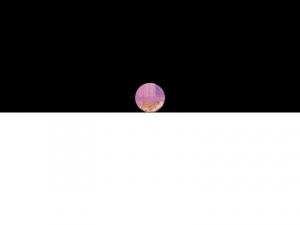Difference between revisions of "Tutorial:Baseline 2D Platformer"
m (Comment grammar and some misc 0.10.0 fixes) |
Ken.athomos (talk | contribs) m (Ken.athomos moved page Tutorial:Platformer Jumping to Tutorial:Baseline 2D Platformer: Renamed to encompass both how to create a basic 2d platformer and how to do character jumping.) |
(No difference)
| |
Revision as of 11:36, 7 August 2016

|
This tutorial is incomplete. Do you want to complete it? |
Due to a request on IRC, this guide has been written to show a basic implementation of platformer-style jumping physics for a player character.
The tutorial is fairly basic and even a newbie should have no issue understanding.
First, let's start off with our basic code, without any jumping.
function love.load()
-- Nice and organised
player = {
x = 0,
y = 0,
image = love.graphics.newImage("hamster.png") -- Let's just re-use this sprite
}
winW, winH = love.graphics.getWidth(), love.graphics.getHeight() -- This is just so we can draw it in a fabulous manner
end
function love.draw()
love.graphics.rectangle("fill", 0, winH / 2, winW, winH / 2)
love.graphics.translate(winW / 2, winH / 2) -- You don't need to understand this
love.graphics.draw(player.image, player.x, -player.y, 0, 1, 1, 64, 103) -- Trust me on the origin position. Just trust me
end
- Note: The hamster.png file is File:Resource-HamsterBall.png.
You should get something that looks like this:
Now, it's time to make it jump. To do this, we'll give the player an upwards velocity, create a gravity variable and a jump height variable.
Add this to your love.load function:
player = {
...
y_velocity = 0,
...
}
...
gravity = 400
jump_height = 300
...
When the player presses the jump button (spacebar for this tutorial) we will increase the x_velocity by the jump_height.
Then, we will move the player upwards while decreasing the velocity by the gravity. We'll add a love.update and love.keypressed callback to make this work.
function love.update(dt)
if player.y_velocity ~= 0 then -- We're probably jumping
player.y = player.y + player.y_velocity * dt -- "dt" means we wont move at different speeds if the game lags
player.y_velocity = player.y_velocity - gravity * dt
if player.y < 0 then -- We hit the ground again
player.y_velocity = 0
player.y = 0
end
end
end
function love.keypressed(key, scancode, isrepeat)
if key == "space" then
if player.y_velocity == 0 then -- We're probably on the ground, let's jump
player.y_velocity = jump_height
end
end
end
Yay, jumping!
However, this is not true platformer-style jumping. In a lot of platformers, holding the jump key makes you jump higher. Let's implement this.
First, let's create a new player variable in love.load.
player = {
...
jetpack_fuel = 0.5, -- Note: not an actual jetpack. Variable is the time (in seconds) you can hold spacebar and jump higher.
jetpack_fuel_max = 0.5,
...
}
Now, we remove our love.keypressed callback. We won't exact time, which is just bothersome to find out using keypressed and keyreleased. Instead, we'll move that logic to love.update.
function love.update(dt)
if player.jetpack_fuel > 0 and love.keyboard.isDown("space") then -- We can still move upwards and we're actually holding space
player.jetpack_fuel = player.jetpack_fuel - dt -- Decrease the fuel meter
player.y_velocity = player.y_velocity + jump_height * (dt / player.jetpack_fuel_max)
end
if player.y_velocity ~= 0 then -- we're probably jumping
player.y = player.y + player.y_velocity * dt -- "dt" means we wont move at different speeds if the game lags
player.y_velocity = player.y_velocity - gravity * dt
-- We hit the ground again
if player.y < 0 then
player.y_velocity = 0
player.y = 0
player.jetpack_fuel = player.jetpack_fuel_max
end
end
end
Other languages
Dansk –
Deutsch –
English –
Español –
Français –
Indonesia –
Italiano –
Lietuviškai –
Magyar –
Nederlands –
Polski –
Português –
Română –
Slovenský –
Suomi –
Svenska –
Türkçe –
Česky –
Ελληνικά –
Български –
Русский –
Српски –
Українська –
עברית –
ไทย –
日本語 –
正體中文 –
简体中文 –
Tiếng Việt –
한국어
More info
